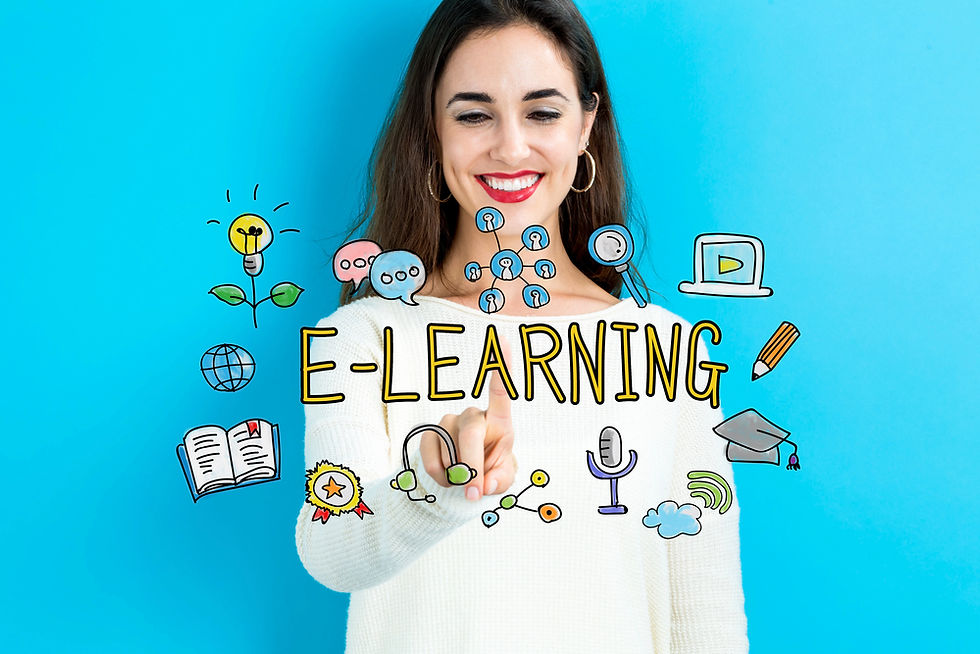How Learning Really Works and Why Evidence-Based Teaching Matters
- Lauren Snowden

- Jan 10
- 4 min read
Updated: Jan 11
Learning is something we do every day, whether we’re perfecting a new recipe, picking up a new language, or figuring out how to assemble that tricky piece of furniture. But have you ever stopped to ask: What is learning, really?
For many, learning means gaining knowledge or acquiring new skills. But it’s more than that, it’s how we adapt, grow, and make sense of the world. In education and training, understanding how people learn best is critical to designing learning experiences that actually work. Unfortunately, some persistent myths, like the idea that discovery learning is an effective learning method, have led many trainers astray, including myself.
What is Learning?
At its core, learning is about change—change in what we know, how we think, what we can do, and even how we see ourselves. It doesn’t just happen in classrooms or training sessions, learning is constant as we solve problems, interact with others, and experience the world around us (Shuell, 2013).
Think about learning to grow vegetables. At first, you might memorize which plants need full sun, how often to water, and when to plant each crop (knowledge). Then, you start preparing soil, planting seeds, and caring for seedlings (skill). Over time, as you gain experience, you begin recognizing plant health issues, adjusting watering schedules based on weather, and experimenting with companion planting or crop rotation (identity shift).
Gardening isn’t just about following instructions—it’s about observing, adapting, and developing an intuitive feel for plants and their needs. Like all learning, it evolves from basic knowledge to hands-on practice to a deeper, more confident understanding.
Some Key Principles of Learning
The following principles of learning highlight that learning is not a passive process, it’s dynamic, personal, and ever-evolving experience for learners. With this in mind, it’s important to ensure that the way we teach and design learning experiences aligns with these principles. The infographic below highlights these key principles, providing a visual guide to how learning works.

By aligning teaching methods with these principles, learners have more meaningful effective learning experiences. There are many myths and philosophical beliefs about learning that can derail an effective learning experience, let’s take a closer look at one myth in particular, discovery learning.
Debunking the Myth of Discovery Learning
A common belief in education is that discovery learning—where learners explore concepts without much guidance—is the best way to learn. The idea sounds great: instead of being told what to do, students figure things out on their own, leading to deeper understanding.But here’s the problem, research doesn’t support this claim (Kirschner & van Merriënboer, 2013).
While some exploration is valuable, unguided learning is often inefficient, overwhelming, and even counterproductive—especially for beginners. Studies consistently show that direct instruction is more effective than pure discovery learning, especially for complex topics. Learners perform better when they have structured guidance rather than being left to “figure it out” on their own (Kirschner & van Merriënboer, 2013).
Successful learning environments balance exploration with structured support—often called “guided discovery” or “directed inquiry.” This ensures learners stay on track while still engaging deeply with the material. The infographic below outlines the benefits of guided discovery and why it leads to better learning outcomes.

Why Evidence-Based Teaching?
Applying teaching methods based on research is critical because it ensures that students receive instruction that aligns with how learning actually occurs, leading to deeper understanding, better retention, and improved academic outcomes. Although the relationship between theory and practice sometimes gives way to the use of philosophical beliefs, established educational practices that have proven effective can and should inform the development of viable learning theories (Shuell, 2013). Through the recognition and use of this evidence-based knowledge the use of learning myth and philosophical beliefs can be minimized. The infographic below highlights four key evidence-based teaching principles, along with examples of how they can be applied in practice.

Research-backed teaching works because it helps students learn smarter, not harder. By incorporating guided instruction, social interaction, observational learning, and structured practice, educators can create an environment where students not only absorb information but also apply it with confidence. Instead of following educational myths, we should rely on scientific evidence to shape the future of learning.
So, knowing all of this—what are you going to do next to make your teaching more effective?
References
Denler, H., Wolters, C., & Benzon, M. (n.d.). Social cognitive theory. The Gale Group. Retrieved from http://www.education.com/print/social-cognitive-theory/
Kirschner, P. A., & van Merriënboer, J. J. G. (2013). Do learners really know best? Urban legends in education. Educational Psychologist, 48(3), 169-183. https://doi.org/10.1080/00461520.2013.804395
Scott, S., & Palincsar, A. (n.d.). Sociocultural Theory. The Gale Group. Retrieved from https://dr-hatfield.com/theorists/resources/sociocultural_theory.pdf
Shuell, T. (2013). Theories of learning. The Gale Group. Retrieved from http://www.education.com/print/theories-of-learning



Comments